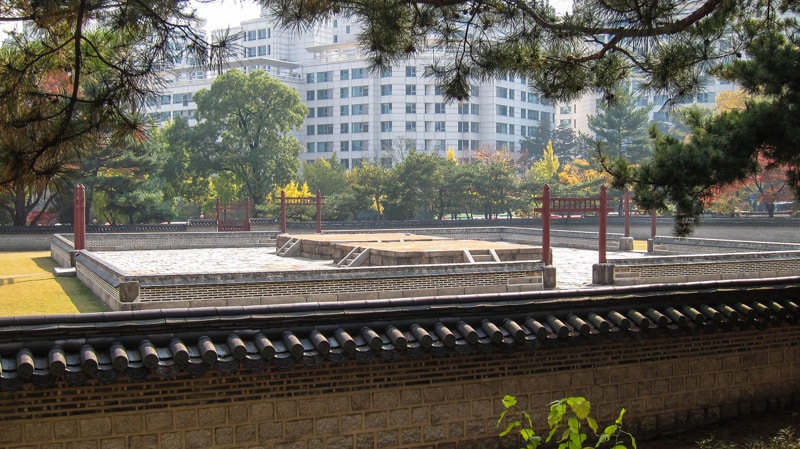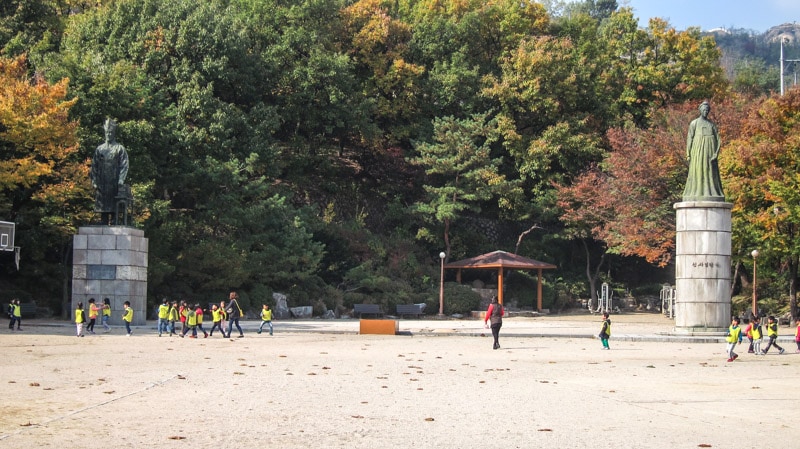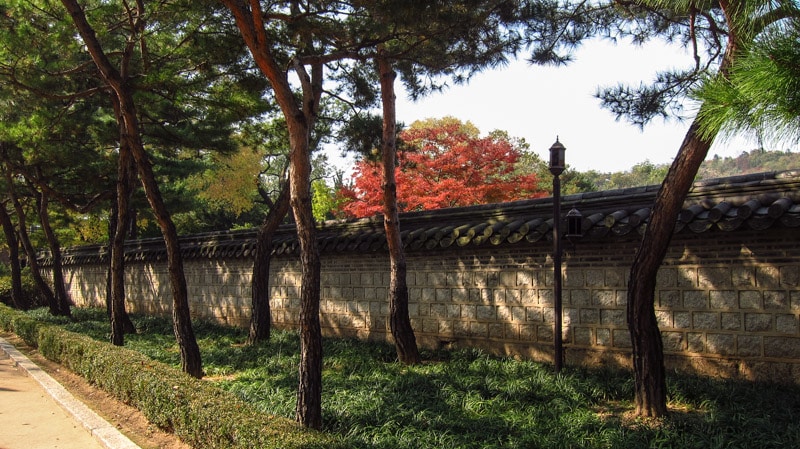
Sajik Park is a park located near the Central Government Complex on the hills of Mt. Inwang. Rites to the deities of earth and grains are performed here. It was here where sacrifices and ceremonies were performed in honor of the deities of the earth and the deities of the grains. These ceremonies and rituals were performed in hopes of a bountiful harvest and included prayers, sacrifices, music, and dance.
These sacrifices have been held at this location in the spring and autumn since the Goryeo dynasty (918–1392). In 1395, King Taejo had the Sajikdan altar built at this location west of Gyeongbokgung Palace. The sacrifices were performed at this altar.
In 1911, sacrifices here ended and most of the altar and other buildings were dismantled or destroyed by the Japanese during their occupation of Korea. Much of what once existed may be gone which is disappointing to most visitors, but the stone base of the alter, surrounding walls, and the main gate still remain. The Sajikdan main gate, which dates back to 1720, still exists today.
In 1922, the Japanese turned the area into a public park. Since then it has become one of the most popular parks in Jongno-gu along with Tapgol Park to the east near Insadong..

In 1988, the ritual was restarted. The ritual is now held once a year on October 3 which is National Foundation Day.
Today, visitors here can enjoy multiple playgrounds, a library, and statues of Sin Saimdang, Hwanghakjeong, and Yi I.

Table of Contents
Sajik Park Hours
24 hours
Admission
FreeHow to get to Sajik Park
Take Subway Line 3 to Dongnimmun Station (Exit 3 or 4).
After exiting, continue for 3 minutes to Sajik-ro Street and turn left. Continue for 10 minutes.
Map
Additional Resources
Book Recommendation: Fodor’s Seoul
While The Seoul Guide provides plenty of information about traveling to Seoul, sometimes it helps to bring a book with you on your journey. Want to visit Gwangjang Market, hike Bukhansan National Park, visit an ancient palace, or sing karaoke all night long? The book I always recommend is Fodor's Seoul, which provides expert recommendations including sights to see, restaurant reviews, maps, and essential trip-planning information for everything related to Seoul.
Learn more about Fodor's Seoul
Rakuten
Save money while exploring Seoul with Rakuten's cashback program. By booking hotels through Rakuten, visitors can earn cashback rewards and enjoy significant savings. Exclusive partnerships and deals make stays in Seoul more affordable, freeing up funds for attractions, dining, and other experiences. I use Rakuten for cashback on all of my hotel stays in Seoul.
If you sign up using the link below, you will get $30 cashback after your first purchase over $30.
Klook
Klook is a reliable online platform offering discounted tickets and reservations for attractions and services in Seoul. It covers theme parks, museums, transportation, WiFi, tours, and more. Travelers can save time and money by booking through Klook's user-friendly interface, with secure transactions and helpful customer support.
If you sign up using the link below, you will get $5 off your first order.
Learn more about KlookLast Updated on Oct 21, 2023